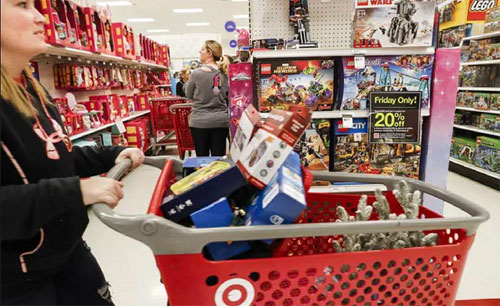By Brice Wallace
Flush with money stockpiled from federal COVID emergency fund distributions, Utahns are ready to spend this holiday season.
But inflation, supply chain disruptions and labor shortages are working to Grinch up problems for the state’s consumers.
“This high consumer demand, coupled with low supply, is driving up prices,” Robert Spendlove, Zions Bank economist, said at a recent news conference at The Hive Market SLC. “Holiday shoppers may find that some of the items on their gift list are now out of stock, though.”
And for items still on the shelves, consumers can expect to pay more. While the National Retail Federation is projecting that the average shopper in the U.S. will spend about $1,000 this holiday season — about the same as in 2020 — “the struggle, though, is that holiday budgets won’t stretch as far this year,” Spendlove said.
The national Consumer Price Index in October showed inflation reaching 6.2 percent, the highest level in three decades. Among the contributors are prices for gasoline, 49.6 percent from a year ago, natural gas up 28.1 percent, used vehicles up 26.4 percent and meat up more than 20 percent. In the Intermountain region, inflation has reached 7 percent overall. Producer prices have risen 8.6 percent, “and that’s an indication that inflation may stick around for a little while longer,” Spendlove said.
“I expect that these kind of price pressures and the inflation that we’re seeing now due to the shortages that we’re seeing, will continue into 2022, maybe mid-2022, but I’m hoping that by this time next year, we’ll start to see those prices come down.”
While the Utah Inland Port may ease supply chain issues in the long run, “we can’t easily solve” the global problems that exist today, he said. Buyers facing the “everything shortage” nonetheless have alternatives. The Hive Market is one. It provides a space for local businesses to promote and sell their goods.
“One of the silver linings, though, is this actually could help local businesses selling locally made products, like The Hive Market, compete against some of those larger overseas producers,” Spendlove said.
Meanwhile, Utah “remains an example of economic success and strength,” he said.
“There are many reasons to be cheerful of Utah economy heading into the holiday season. There’s been a lot of buzz lately about the supply chain obstructions, labor shortages and also especially inflation, and while these challenges could make holiday shopping a bit tougher this year, Utah’s overall economy looks really bright.”
That economic outlook also is boosting Utah’s consumer confidence, which is 81.5, compared to the national number of 71.7. And Utah also has added 47,000 jobs since February 2020, behind only Idaho.
“Utah’s economy was not immune to the impacts of the recession and Utah’s economy is not immune to the supply chain struggles and the labor shortage,” Spendlove said. “ But our state has recovered very well and our state is very well-positioned for the future economy.”








